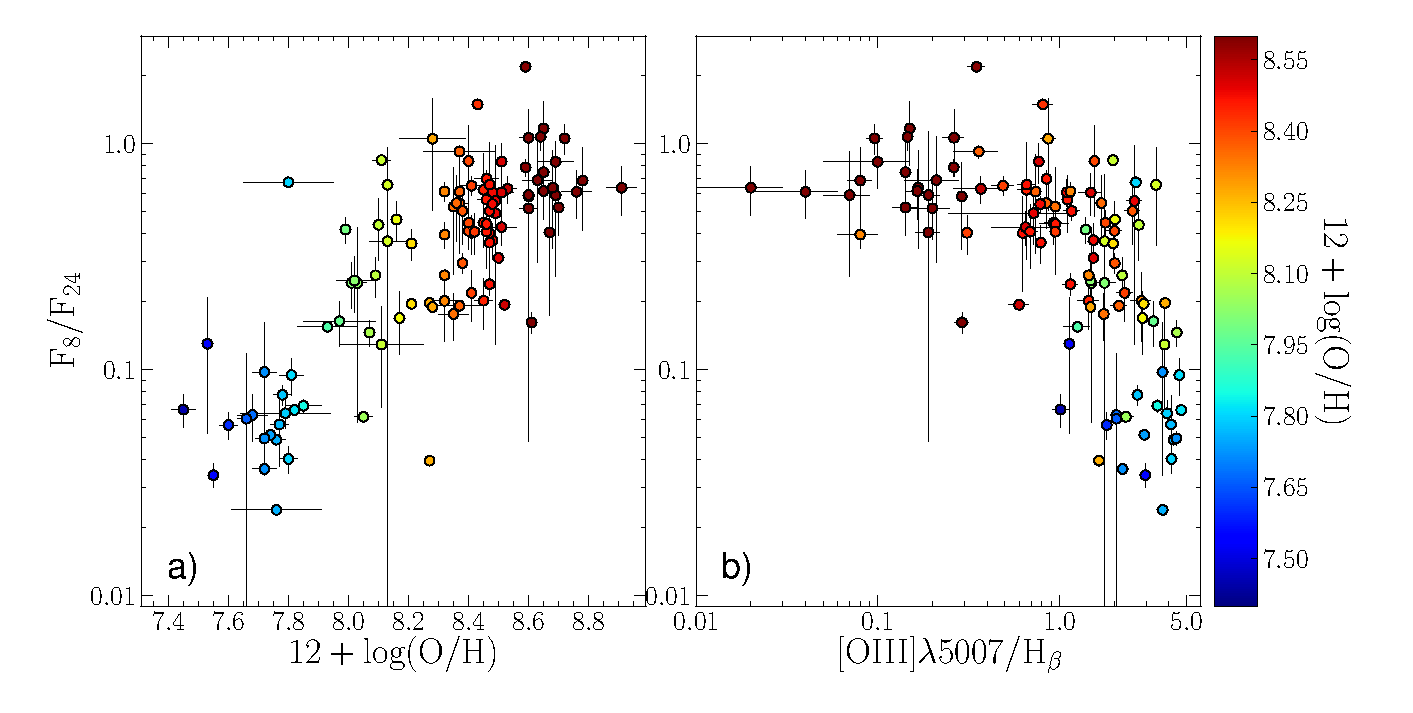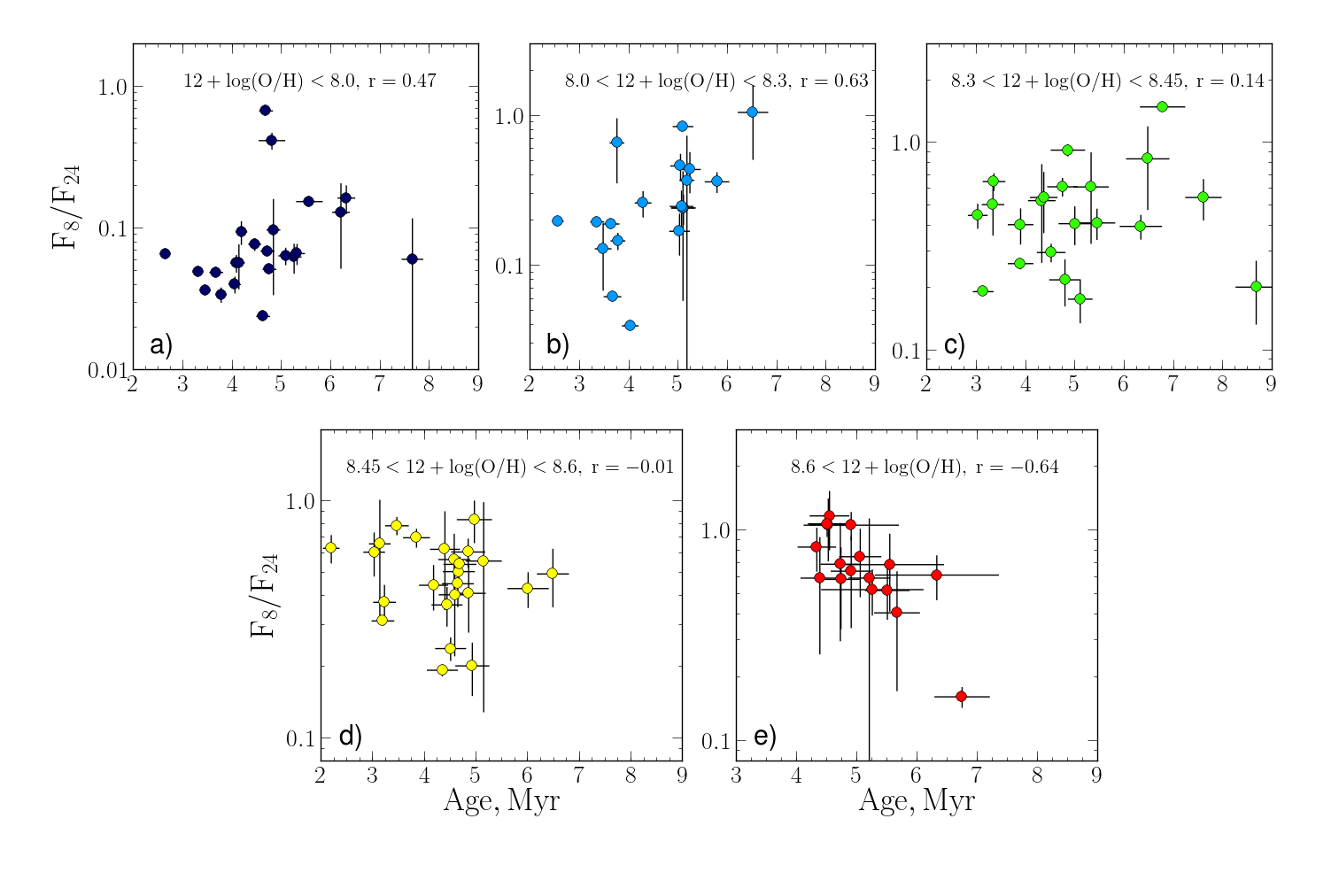|
We present an analysis of optical spectroscopy and infrared aperture photometry of more than 100 HII complexes in nine galaxies. Spectra obtained with the 6-m telescope of SAO RAS are used along with archival data from Spitzer and several ground-based telescopes to infer a strength of PAH emission, age, properties of the UV radiation field, and metallicity of studied HII complexes. Physical properties (age, radiation field parameters, metallicity) are related to the F8/F24 ratio used as a proxy for the PAH abundance in order to reveal factors that may influence the PAH evolution in HII complexes. The well-known correlation between the F8/F24 ratio and metallicity is confirmed in the studied complexes. The infrared flux ratio also correlates with the OIIIλ5007/Hβ ratio which is often considered as an indicator of the radiation field hardness, but this correlation seems to be a mere reflection of a correlation between OIIIλ5007/Hβ and metallicity. In separate metallicity bins, the F8/F24 ratio is found to correlate with an age of an HII complex, which is estimated from the equivalent width of Hβ line. The correlation is positive for low metallicity complexes and negative for high metallicity complexes. Analysing various mechanisms of PAH formation and destruction in the context of found correlations, we suggest that PAH abundance is likely altered by the UV radiation within HII complexes, but this is not necessarily due to their destruction. If PAHs can also form in HII complexes due to some processes like aromatisation, photodestruction, shattering and sputtering of very small grains, the net F8/F24 ratio is determined by a balance between all these processes that can be different at different metallicities.
Results of this work are here .
|



